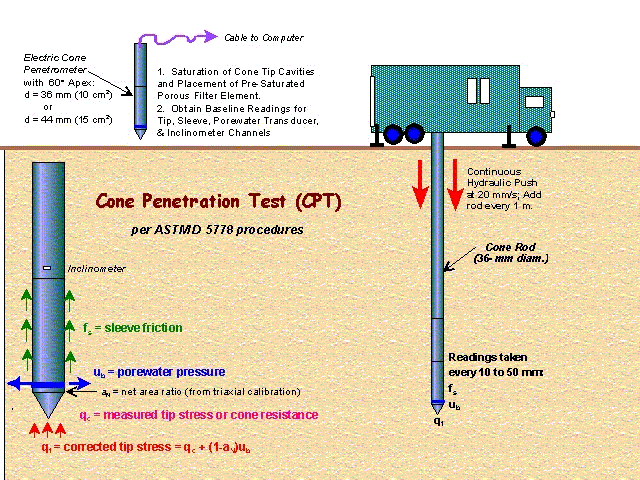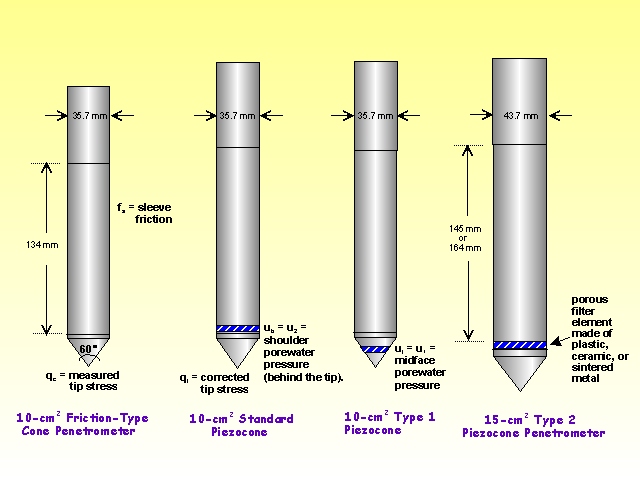Concept
The piezocone penetration test (CPTu) is a in situ testing method used to determine the geotechnical engineering properties of soils and assessing subsurface stratigraphy, relative density, strength and equilibrium groundwater pressures. The test is a special type of Cone Penetration Test (CPT) which allows additional measurement of excess pore pressure generated during the penetration. Indeed, "u" in CPTu represents the porewater pressure. Due to its efficiency and precision, the CPTu is becoming one of the commonly used in-situ testing methods in geotechnical investigation worldwide.
Description and procedure
The piezocone penetration test (CPTu) is a in situ testing method used to determine the geotechnical engineering properties of soils and assessing subsurface stratigraphy, relative density, strength and equilibrium groundwater pressures. The test is a special type of Cone Penetration Test (CPT) which allows additional measurement of excess pore pressure generated during the penetration.
The testing principal and procedure is similar to CPT. The testing apparatus consists of an instrumented still cone having a tip facing down, with an usual apex angle of 60° and cross-section area of 1000 mm2, and additional pore water pressure transducers. The cone is attached to a internal still rode than can run inside a outer hollow rod, which itself is attached to a sleeve. In the more elaborate CPT instruments, the cone and the sleeve (attached to the outer rod) can move separately. The pore pressure transduceres consists of porous elements situated at the base of the cone.
Compared to static CPT, the electrical CPTu has been significantly improved in terms of precision and acquired data. The data can be continuisly acquired at much smaller intervals compared to mechanical CPT.
CPTu can be also used to carry out pore pressure dissipation test. A dissipation test can be performed at any depth by measuring the rate of excess pore water dissipation of excess pore pressure to reach a certain percentage of equilibrium value represnting the hydrostatic water pressure at that depth. The test provides usefull information about the porewater pressure dissipation of the soil and its potential for liquifation.


Standards
- ASTM D5778 - 07 Standard Test Method for Electronic Friction Cone and Piezocone Penetration Testing of Soils Link
